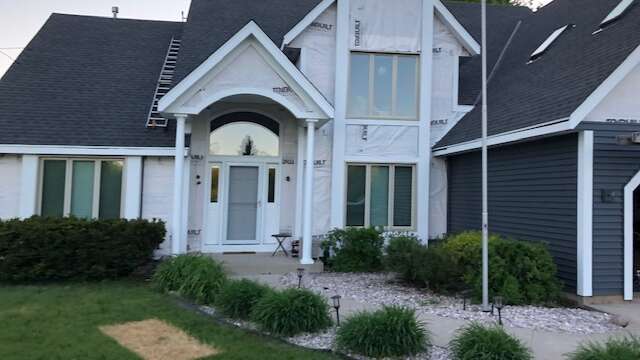
Discover the Difference
That We Can Make!
A fresh coat of exterior paint can give your house a whole new look. New paint for an old home is the easiest and most cost-effective way to make the house look like new. A new paint job can also be as easily completed for a newer home for those people looking to change colors, styles or the look altogether!
Exterior services we offer include:
- Scrape or sand all surfaces to rid them of loose or peeling paint
- Perform minor carpentry repairs on damaged or rotted surfaces
- Remove and replace loose glazing to protect windows from weather damage
- Caulk and seal gaps to prevent moisture from attacking wood, metal, and paint
- Follow lead-based paint protocols and other safety standards
- Use drop cloths, plastic and masking to collect paint chips and protect nearby surfaces as needed
- Use high quality paint and materials
As you consider your planning for your paint project be sure to think about the following:
-
- Mother Nature – the time of year is key, so understand your local weather and try to select a dry time of year when there is little rain and lower humidity. The paint needs time to dry and will not adhere well to surfaces which aren’t dry. Your project also may become delayed or take longer than you planned.
- Consider your home and where wood or siding material are deteriorating. If there are larger areas which are rotting, be sure to replace those prior to the paint job. The painter will do some minor carpentry repairs, but if the carpentry job is too large, it may delay your project from completion if it isn’t done prior to the painter arriving.
- Think about prepping your landscape or the areas nearby which are being painted. If you have outdoor furniture, hoses, grills, etc. which are nearby areas being painted, you may want to consider moving them from the area or covering them up to ensure they are protected.
Understanding the Process
Typically, the most arduous part of any painting project is the prep work. Unfortunately, skipping the prep work can mean a sub-par application, adhesion and integrity of the paint. Prepping the surfaces means scraping or sanding the surfaces to ensure loose or peeling paint has been removed. Cracks and minor repair to damaged or rotting wood need to be completed to ensure even and smooth surface. Paint will adhere the best to those smooth surfaces. It would be a shame to have a newly painted home and have it crack or peel in just a few months, after all.
At times, your painter may decide to mask walls, windows, floors, or trim in preparation for painting. This can help protect the areas that should not be painted. Depending on what and how much is being painted, the painter may choose to mask or not mask off certain areas.
If you’re having an exterior area which you currently expect to be painted, be sure to cover items or remove them from the area that is being painted. This way, you can ensure your belongings stay safe and in one piece. It can be difficult for a painter to sometimes have to work around objects which may have items left in close proximity. Professional painters don’t typically wash the exterior surfaces, so if you are expecting that they are hand scrubbed or pressure washed prior to painting, be sure that you discuss this prior to agreeing on the cost of the project and expect to pay more for the service. A better option would be do the cleaning yourself before the painter arrives – give it at least a day to dry.
A fresh coat of paint is a great home improvement idea which should be done every few years. Whether you choose to paint one wall or your entire house, you will find your house looking new again with just a splash of paint. A new paint job can note only refresh the look of your home, but also increase the home’s value, brighten your space, even provide an inexpensive way of updating your home!
The choice of color should be made at the beginning of the project. If you are undecided, ask for a color test, and the painter will be happy to do it for you. You should probably not wait until the whole house is painted before telling the painter that the color is too dark or light. Typically, you should inspect when the project is completed. but it is also possible to inspect during work to monitor the progress. That will allow you to question or to highlight the points which can be corrected earlier. When our customers inspect us during the work, they often notice that we exceed their expectations, and they trust us so much that they do not even feel the need to inspect later. However, we leave that opportunity open and available. We typically like to provide an inspection at the end to make sure that the project has been completed to your satisfaction and that nothing has been missed.
